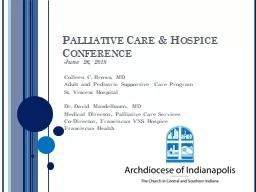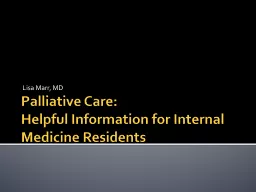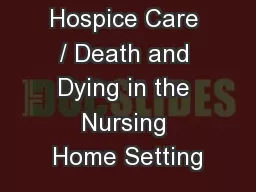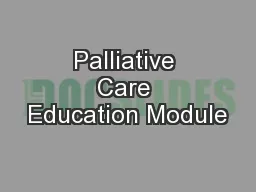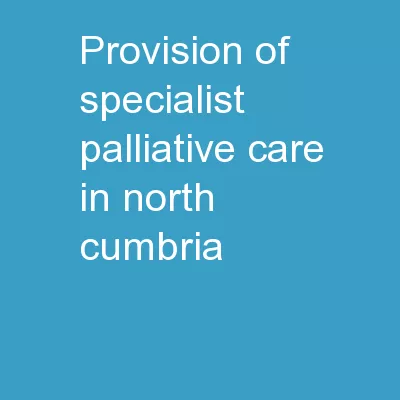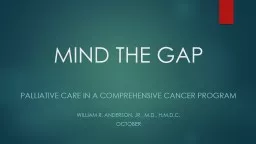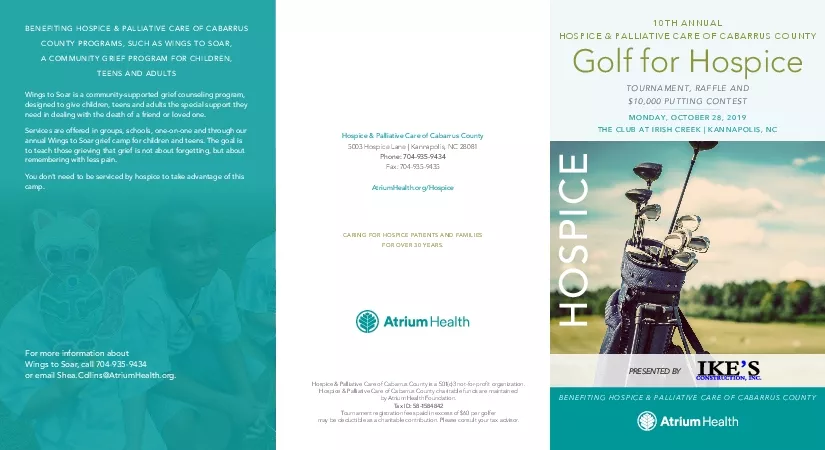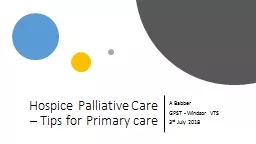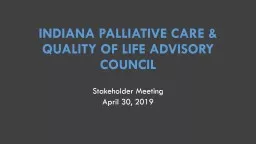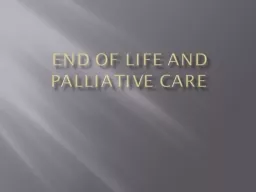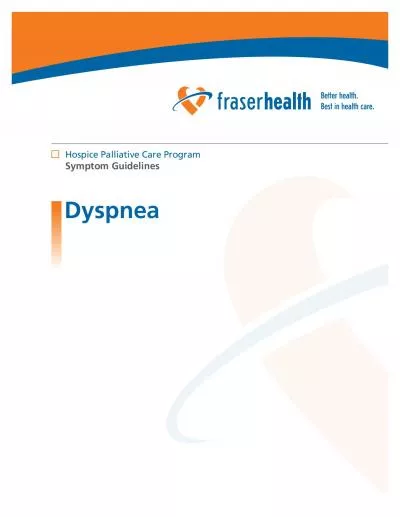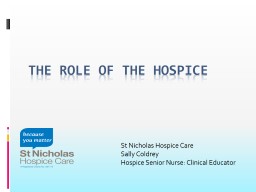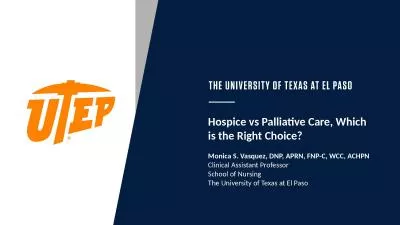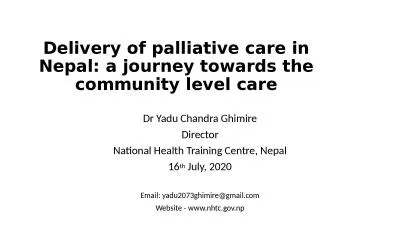PPT-Palliative Care & Hospice Conference
Author : vamput | Published Date : 2020-06-17
June 26 2018 Colleen C Brown MD Adult and Pediatric Supportive Care Program St Vincent Hospital Dr David Mandelbaum MD Medical Director Palliative Care Services
Presentation Embed Code
Download Presentation
Download Presentation The PPT/PDF document "Palliative Care & Hospice Conference" is the property of its rightful owner. Permission is granted to download and print the materials on this website for personal, non-commercial use only, and to display it on your personal computer provided you do not modify the materials and that you retain all copyright notices contained in the materials. By downloading content from our website, you accept the terms of this agreement.
Palliative Care & Hospice Conference: Transcript
Download Rules Of Document
"Palliative Care & Hospice Conference"The content belongs to its owner. You may download and print it for personal use, without modification, and keep all copyright notices. By downloading, you agree to these terms.
Related Documents

